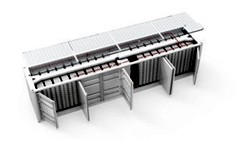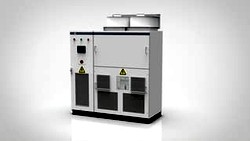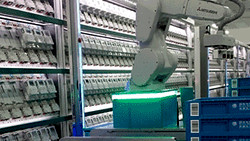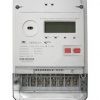Each conductor (wire) has a resistance. Resistance means heat development inside the wire. Technically it's a loss.
Energy meters are type tested for influence of self-heating. The billing is accurate. But what happens behind or in front of the meter installation?
The installation wiring needs to be proper dimensioned. A first approach can be using the formulas for calculation.


Explanation of dimensions
A = area (our cross-section)
l = length of the cable in meters
I = rated current in ampere
√3 ̅ = concatenation factor of three-phase current
cosφ = active power factor
γ = conductivity of the wire material in Siemens/meter
(the calculator is using 56 for copper or 37 for aluminium @ 25 °C)
Ua = Permissible voltage drop of the cable in % (Germany has fixed this on 3 %)
| Wire cross-section calculator | |
|---|---|
| Supply Voltage U | |
| Phases | |
| Wiring material | |
| Wire length l | |
| Current I | |
| Powerfactor cosφ | |
| Voltage drop % | |
| Cross section of a single wire: |
The calculated value needs to be rounded up to the next commercial available wire cross-section. These are: 1.5 mm², 2.5 mm², 4 mm², 6 mm², 10 mm², 16 mm², 25 mm², 35 mm², 50 mm².
In addition, you need to consider:
– harmonic content
– the environmental temperature and weather conditions
– single wire or multiple wires with sheathing
– cable trunk or in-wall installation
– rated current given by DIN EN 60204
– local utility rules and regulations
For building installations you can find a mountain of standards for wiring dimensioning. The distribution wiring is usually calculated by the utilities. This has direct impact on their technical losses.
These losses can be observed with AMI systems by comparing the total consumption behind a distribution transformer with the energy meter consumptions.
Thank you for reading.
Editor's note: This article was originally published in September 2020 and has been updated for comprehensiveness.





we need to control the loss when the cable needs to warm itself, then warm itself in the winter, otherwise the ice and snow will make the cable heave!! haha!
That would be nice, but unfortunately we can't cheat the physics. The resistance increases with the temperature. So a wire with the same load has more self-heating in summer.